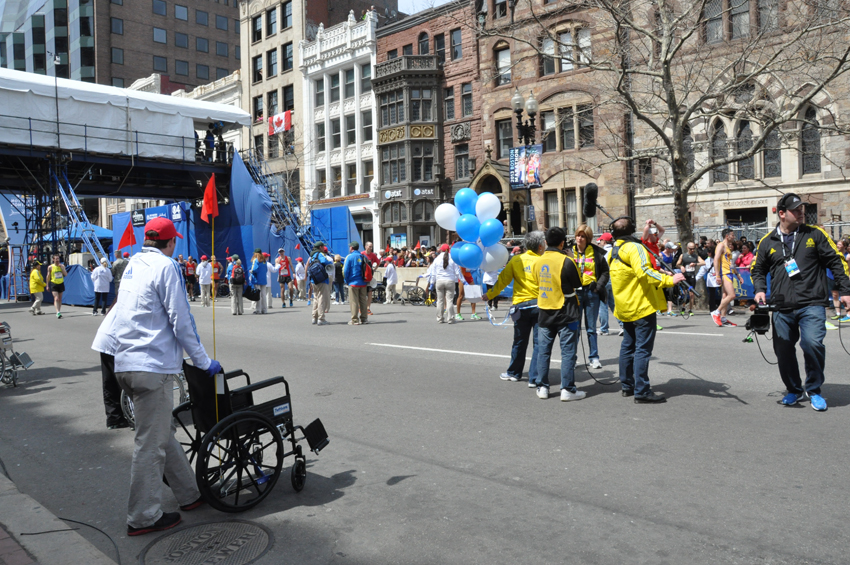Medical Response Helped by Training, Speed

Members of the race team before the explosions. Photo by Regina Mogilevskaya
As horrible as Monday’s tragic events were, some solace can be taken in the fact that they happened in a city with some of the nation’s best hospitals. In fact, reports have surfaced over the past few days detailing the expertise and efficiency of both the Marathon medical crew and the hospital staffs immediately following the bombing.
Evidence of just how good the response was? A Wall Street Journal article reports that most of those injured by the explosions were in the medical tent receiving treatment within just five minutes of the blast, an amazing feat (and one that likely saved many lives) given the chaos at the finish line. Plus, the WSJ reports, Boston’s police and fire departments and emergency medical teams went through trainings that simulated the aftermath of a bomb detonation just two years ago, practice that helped the response run amazingly smoothly Monday.
A Globe article also speaks to how well-trained the city’s hospitals—already a point of pride for Boston—are. The report says:
At trauma centers across the city Monday, doctors and nurses were pulled from treating routine chest pain and twisted ankles. Hospitals put in place long-rehearsed emergency plans, summoning help from across their campuses, and paging off-duty staff. Dozens of caregivers, including some unable to finish running the Marathon, simply showed up.
Hospitals prepare for mass disasters, for dirty bombs, subway crashes, downed airplanes. Many ER physicians have treated wounded soldiers in Iraq and Afghanistan. So everyone knew where to go, what to do.
Many nurses on the scene had also received trauma training according to a CNN report, which helped immensely in the immediate response. The article quotes Stephen Segatore, who has worked as a Boston Marathon nurse six times and was in the fray of treatment Monday:
“The most amazing thing was how everyone worked in tandem. They didn’t even have to speak a word between each other,” he said. “In 20 years of nursing, this was the most amazing two hours of nursing in my life.”
In addition to top-notch skill and training, the timing of the event also helped make the response effective, the WSJ article says. Many hospitals in the city do shift changes around 3 p.m., the article says, so when victims were taken to the hospitals around that time, both physicians who were just coming in and those who were about to leave were able to jump in and help. The fact that small numbers of victims were brought to different hospitals around the city also helped prevent overwhelming any one location’s staff, the article says.
As these articles and the countless inspiring photos taken that day attest, we as Bostonians should be prouder than ever of our medical community, and the way they responded in the face of unthinkable tragedy.


